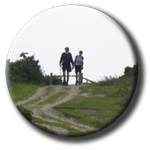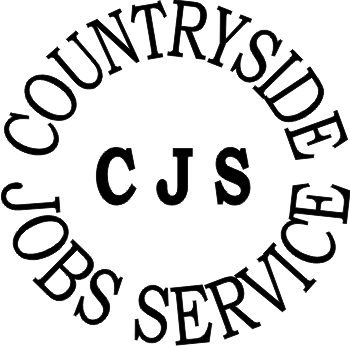Naturenet: Public Rights of Way Definitions
Public Rights of Way
definitions
T
 he most widely known right to cross private land is known as a 'right of
way'. If this is a right granted to everyone it is a 'public right of way'.
There are several types of 'way' and together they are called 'highways'. Although
in normal language a highway is often considered to be a major road (probably
because of this common meaning in America) the proper sense of this word can
refer to the smallest footpath as well as the biggest motorway.
he most widely known right to cross private land is known as a 'right of
way'. If this is a right granted to everyone it is a 'public right of way'.
There are several types of 'way' and together they are called 'highways'. Although
in normal language a highway is often considered to be a major road (probably
because of this common meaning in America) the proper sense of this word can
refer to the smallest footpath as well as the biggest motorway.
Rights of way can be on any land, including privately owned land. Landowners
have the right to allow other uses of a highway they own or control, so for
example they can drive a tractor along a footpath on their own land, or allow
someone else to do so. The use of a public right of way may be temporarily
or permanently restricted by a Traffic Regulation Order issued by a highway
authority. These often restrict use by motor vehicles, but sometimes might
restrict use of a path at certain times, or by certain types of user such as
cyclists. There will normally be a sign informing users of any such restrictions.
If the path is used for walking only, it is a footpath. This is different from
the pavement alongside a road, in that it means the whole width of the highway.
Footpaths are usually just tracks, and are rarely surfaced or lit.
Bridleways (or bridlepaths) are also footpaths, but additionally users are permitted to ride or lead a horse, and ride bicycles. Horse drawn vehicles are not allowed. A donkey or mule is classed as a horse for these purposes. Cyclists must give way to pedestrians and horseriders. Mechanically-propelled vehicles, including motorcycling, is not allowed. Bridleways are not necessarily surfaced, and because of this a well-used bridleway can sometimes be effectively impassable for pedestrians.
BOATs allow the use of wheeled vehicles of all kinds, but the highway is normally used for walking or horse riding. Driving of off-road type vehicles for recreational purposes often happens along such highways. They are not usually surfaced, and can get very wet and muddy for obvious reasons.
Until 2006 some highways were still legally classified as a RUPP, which is a very vague definition. Remaining RUPPs were reclassified as restricted byways with effect from 2 May 2006 in England and 16 November 2006 in Wales.
A category of right of way created under the Countryside
and Rights of Way Act 2000 . A restricted byway allows a right of way on foot, on horseback, or leading a horse, cycling and for any vehicles other than mechanically propelled vehicles. In some cases there may also be a right to drive animals.
This definition has no legal status. It usually refers to a BOAT or RUPP, but
in some cases a road called a green lane may have no right of way along it at all.
It is possible for landowners to allow access over their land without dedicating
a right of way. These accesses are called permissive paths. To the user they
are often indistinguishable from normal highways, but there are some important
differences.
. A restricted byway allows a right of way on foot, on horseback, or leading a horse, cycling and for any vehicles other than mechanically propelled vehicles. In some cases there may also be a right to drive animals.
This definition has no legal status. It usually refers to a BOAT or RUPP, but
in some cases a road called a green lane may have no right of way along it at all.
It is possible for landowners to allow access over their land without dedicating
a right of way. These accesses are called permissive paths. To the user they
are often indistinguishable from normal highways, but there are some important
differences.
- A permissive path must have some sign or similar indication that it is
not intended to be a right of way.
- The landowner can close off or divert the path if they wish to do so, without
any legal process being involved.
- The landowner can make restrictions which would not normally apply to highways,
for example to allow horse riding but not cycling, or the other way around.
Permissive paths are commonly found on land owned by a body which allows public
access, such as a local authority, a Railway Authority, or the National
Trust .
.
 When a highway has separate areas for vehicles and pedestrians, which most
people would call the 'road' and the 'pavement', these areas are known in
official circles as the 'carriageway' and the 'footway'.
When a highway has separate areas for vehicles and pedestrians, which most
people would call the 'road' and the 'pavement', these areas are known in
official circles as the 'carriageway' and the 'footway'.
Pavements are simply part of the highway which they go alongside, and do not
have any separate legal existence. So normally they are not considered as paths
in their own right, although there are often other pathways in built up areas
which may be public rights of way, and sometimes other rights of way (e.g.
a footpath) can go along a pavement - this is often where a new road has been
built across or along an existing, older, right of way.
Common law ensures the right to pass along any highway, and in the case of
pavements (paths alongside vehicular roads, usually in urban or suburban areas)
the pavement is usually included in the highway. This means that it is an offence
to obstruct a pavement. However, it does not mean that users can cycle or drive
on the pavement, unless there are special measures to allow this (e.g. a designated
cycle route).
Confusingly, to a highway engineer, the term 'pavement' refers to the whole
of the paved area, so the carriageway is the main area of pavement, and the
footway may or may not be classed as pavement depending on whether or not it
is surfaced.

 he most widely known right to cross private land is known as a 'right of
way'. If this is a right granted to everyone it is a 'public right of way'.
There are several types of 'way' and together they are called 'highways'. Although
in normal language a highway is often considered to be a major road (probably
because of this common meaning in America) the proper sense of this word can
refer to the smallest footpath as well as the biggest motorway.
he most widely known right to cross private land is known as a 'right of
way'. If this is a right granted to everyone it is a 'public right of way'.
There are several types of 'way' and together they are called 'highways'. Although
in normal language a highway is often considered to be a major road (probably
because of this common meaning in America) the proper sense of this word can
refer to the smallest footpath as well as the biggest motorway.  When a highway has separate areas for vehicles and pedestrians, which most
people would call the 'road' and the 'pavement', these areas are known in
official circles as the 'carriageway' and the 'footway'.
When a highway has separate areas for vehicles and pedestrians, which most
people would call the 'road' and the 'pavement', these areas are known in
official circles as the 'carriageway' and the 'footway'.